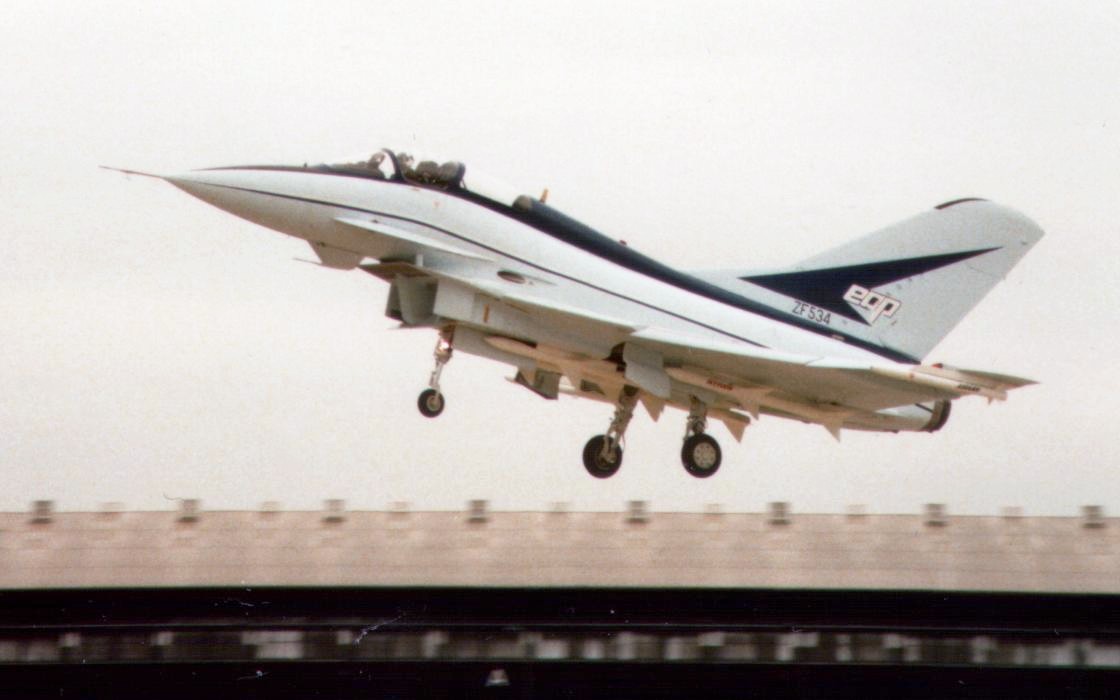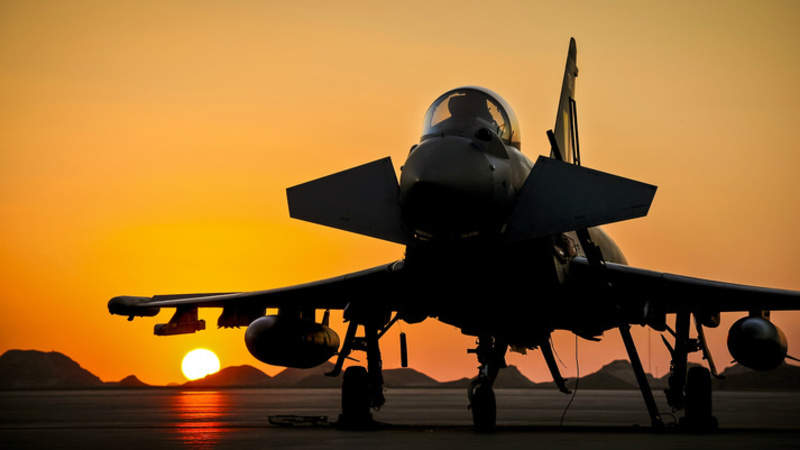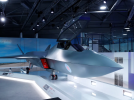The plane is ours, which German plane has flown since the war designed by themselves? I can give you a fair few that we have flown, we can start with the Harrier Jump jet.
The concept design was agreed on principle from the German idea of the TKF-90, with great changes made by British designers. However the Germans and Italians contributed nothing financially and wanted to walk away so we had to go it alone.
The 'father' of the Eurofighter was the EAP, which was entirely built and every part provided by British firms. It was tested at BAe's Warton facility and went onto to fly 259 sorties.
View attachment 955492
Heck it was even flown in your backyard at the Paris air show in 1987, which was perhaps before you were born.
The engine design and build is British, the rest of the nations are so far behind I can't believe you raised that as a point. The EJ-200 is completely based off the design and testing of the British XG-40. What are you going on about it
"not only".
Yes ok....
Snecma M88
View attachment 955496
EJ-200
What do you mean its international career is nearly over? It will fly in the RAF till 2040 and air arms around the world have no plans to retire it anytime soon.
Bronk is confident that the Typhoon will continue to form the backbone of the RAF until at least 2040,
Explore the role of the Typhoon Eurofighter in the Royal Air Force (RAF) alongside the F-35 with Airforce Technology. Delve into insightful features on the capabilities

www.airforce-technology.com
RAF Typhoons would smoke your Rafales which are over glorified multirole planes. It's air to air capability is good at best, and not in the league of the Typhoon.
Read this my dear friend;
The Typhoon is able to sustain and then, due to the powerful EJ200s, regain their energy value much better than Rafale. The British Pilot said any aircraft would lose energy during the air combat merge.
What Typhoon will do is regain this energy very quickly. We regain the energy in order to make the next shot. The aviator said, “I have beaten Rafale with Eurofighter Typhoon during a real flight training engagement.”
Turkiye wants to modernise its F-16 fleet and add twin-engine aircraft to its inventory. We asked about the advantages of Typhoon to a British aviator.

www.turdef.com
Here is a good write up on a fight between the two;
As an air to air platform, yes. As an all rounder probably not. It’s close though.
Typhoon
Rafale
I’m ignoring pilot integration and ease of use etc. as no-one really knows the answers to this apart from those who have designed or flown the jets and none of these people will openly discuss the details. There’s also a lot of marketing fluff on the internet for both platforms which, as you’d expect, is driving an ulterior motive other than a straightforward comparison.
Air combat is a very complex subject but pilot skill, weapons systems, and third party support (ie, AWACS) aside, in Beyond Visual Range (BVR) combat there are 3 key areas:
- Observability. How well can the radar and infra red detection systems of the opposition “see” your jet. It’s a huge subject in it’s own right but I won’t go into any more detail as neither the Typhoon nor the Rafale are “stealth” jets and both are easily detectable by each other’s radar (not IRST) at ranges that exceed the primary BVR weapon they both carry; the Meteor. This point ends in a draw.
- Sensors. Effectively the same as observability but reversed; how well can your jet “see” the enemy. Being able to detect targets and maintain a radar track is critical and both the Typhoon and the Rafale have a very similar array of sensors. Radars between the two are slightly different with the Rafale having the edge in search while Typhoon has an advantage in maintaining a track at range. Some would argue one is better than the other but they each have their own strengths and weaknesses. Even though both fighters have Infra-Red Search & Track, it isn’t really applicable at long range BVR as it has a relatively short detection range. Their Electronic Warfare (EW) suites are also comparable and both sides claim theirs to be the best in the world. Likewise, both aircraft have extensive datalink type connectivity and weapons integration to a similar level. Until the Typhoon is equipped with the new Captor-E radar (which will give it the edge) this point ends in a draw.
- Speed at Altitude. Now this is more interesting and there is one big reason being able to go faster at higher altitudes provides a massive advantage; missile range. The missile starts its journey at the speed of the jet it’s launched from so a faster jet means a faster missile and this translates to a longer range and No Escape Zone (NEZ). The NEZ is the range at which a target cannot defeat a missile by turning around and flying away. In addition to this, at high altitudes the air is thinner which means the missile has to contend with less drag which in turn also adds more range. Speed is also important to defeat oncoming missile threats and the faster jet will always have a lower Minimum Abort Range (MAR); in simplistic terms this is the same as the NEZ but from the perspective of the target. Therefore, all other considerations being equal, it’s reasonable to suggest that whichever airframe can give it’s missiles the largest NEZ and itself the shortest MAR can be expected to win the fight. With superior speed and altitude performance and identical BVR missiles the Typhoon is a clear winner here.
If both jets actually get into a dogfight it’s almost always decided by pilot skill rather than the platform but as I mentioned earlier, I’m only comparing the aircraft in this answer, not pilot skill.
Each fighter has very different characteristics in the Within Visual Range (WVR) and need to be flown accordingly to maximise their own advantages and nullify the advantages of their opponent.
You’ll find lots of statistics online about the sustained turn rates (how quickly can the jet turn while maintaining the same airspeed) and instantaneous turn rate (how quickly can the jet turn ignoring any loss in airspeed). The fact is that these numbers are highly dependant on lots of contributing factors and will vary according to the dimension of the turn, how much fuel each jet is carrying, ordinance, altitude, speed, even temperature. This information is not known to the general public and any source which provides a single number for any turn rate is highly suspect in my opinion.
Illustration highlighting the difference between the canards of the Typhoon and the Rafale above
What we do know, purely from the close-coupled canard design of the Rafale, is that high lift takes priority over high speed manoeuvrability. High lift creates drag so in real terms, this means it is likely to loose more speed in the turn than the Typhoon. However, as a result it’s also likely to be able to turn tighter (instantaneous turn rate) and handle better at low speeds. The Typhoon on the other hand is expected to be able to maintain tight turns for longer (sustained turn rate), especially considering it’s superior thrust/drag to weight ratio.
In simplistic theory the Rafale should be able to out-turn the Typhoon at the start of the fight (or in a low speed engagement) but will be in trouble if it doesn’t ‘kill’ the Typhoon quickly before it runs out of airspeed.
Thrust, drag, lift, and weight ratios are extremely complex
but it’s generally accepted that the Typhoon has a better thrust/drag to weight ratio so maintaining and regaining energy (speed) is an advantage the Typhoon holds.
To conclude how the two compare in air to air; the superior speed at all altitudes and service ceiling gives the Typhoon the ability to control the fight. If the conditions do not favour an engagement it has the performance to disengage and re-position to maximise it’s strengths. This performance also provides superior range to it’s missiles and increases the probability of a successful ‘kill’.
I
n air to ground the situation is different. While the Typhoon has come a long way in A2G capability in the last few years the fact remains that the Rafale can carry more ordinance. This is undisputable and very desirable in a multi-role/swing-role/omni-role (take your pick from the marketing terms) fighter. It’s more than capable of defending itself and is a very good air superiority jet in it’s own right as well. The Typhoon does have a better operational range and super-cruise is a big benefit in the A2A role, but drop tanks make this relatively unimportant compared to the other points I’ve covered.
Other benefits the Rafale hold include a lower cost (disputable but generally accepted) than the Typhoon and the ability to operate from carriers. The latter being a huge benefit for force projection.
Overall, the Typhoon can control the air-to-air fight and will probably win against the Rafale more often than not. If you’re after a more rounded package the Rafale is, in my opinion, the worlds premier non-stealth strike fighter right now.
Watch this space though, aircraft upgrades happen all the time and all of this could change.
https://www.aviacionline.com/2022/07/raf-typhoon-fleet-to-receive-worlds-most-advanced-aesa-radar/?utm_content=cmp-true
As part of a £2.35 billion modernization program, RAF Typhoon fighters will be equipped with the advanced AESA ECRS Mk2 radar.
By the way where is your sixth generation aircraft?
Here is ours.
View attachment 955498












